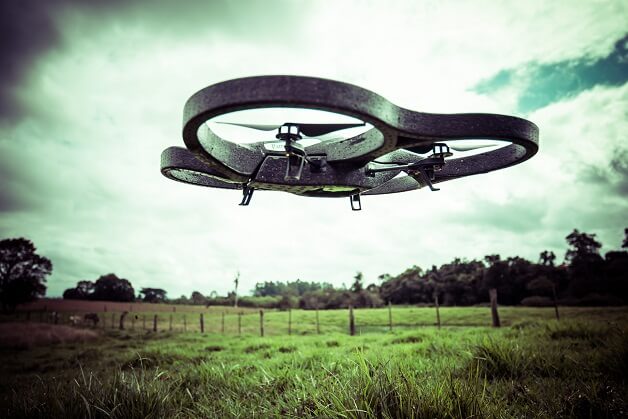Both the Federal Aviation Administration (FAA) and the White House on February 15th announced new guidelines on the use of drones in the U.S.
The FAA’s proposed rules governing small drones (unmanned aircraft systems or “UAS”) will not be final until after the 60-day public comment period. The proposed rules include the following:
- UAS cannot weigh more than 55 lbs. (25 kg).
- Operator or visual observer must maintain visual line-of-sight with UAS at all times.
- UAS cannot operate over any person not directly involved in the operation.
- UAS can only be operated during daylight (official sunrise to official sunset, local time).
- UAS must yield right-of-way to other aircraft, manned or unmanned.
- Maximum airspeed is 100 mph (87 knots).
- Maximum altitude is 500 feet above ground level. No operations are allowed in Class A (18,000 feet & above) airspace.
- No one may operate or act as a visual observer for more than one UAS at one time.
- No careless or reckless operations.
- Preflight inspection by the operator is required, to assure UAS is safe for flight.
- Operators must be at least 17 years old, pass an aeronautical knowledge test, hold an FAA UAS operator certificate, and pass a TSA background check.
- Operators must report accidents resulting in injury or property damage to the FAA within 10 days.
- UAS must avoid airport flight paths and restricted airspaces, and obey any FAA Temporary Flight Restrictions.
Of these, the requirement that the drone be operated within the operator’s line of sight and the prohibition of flying over people (except those involved with the operation) will likely pose the biggest challenges to companies hoping to incorporate drones into their commercial operations. It’s hard to imagine, for example, how online retailers could realize its goal of delivering packages to residential areas under the rules as currently proposed.
The White House’s Executive Order accompanied the FAA’s release of its proposed rules. The Order only specifically addresses the use of UAS by government agencies, and provides guidance in several areas:
Privacy Protections
Agencies (i) shall only collect or use information consistent with and relevant to an authorized purpose; and (ii) retain the information for no more than 180 days unless retention is necessary for an authorized mission of the retaining agency or under applicable law or regulation. And the policies must be examined for compliance with these requirements before any new UAS technology is deployed and at least every 3 years thereafter.
Civil Rights and Civil Liberties Protections
Agencies must ensure (i) policies are in place to prohibit the collection, use, retention, or dissemination of data in any manner that would violate the First Amendment or discriminate against persons as prohibited by law (e.g., on the basis of gender, race, or sexual orientation); (ii) UAS activities are performed consistent with obligations under the law, Executive Orders, and other Presidential Directives; and (iii) adequate procedures are in place to receive, investigate, and address any privacy, civil rights, and civil liberties complaints.
Accountability
Agencies must (i) ensure that oversight procedures for UAS use comply with existing policies and regulations; (ii) verify the existence of rules of conduct and training for personnel and contractors who work on UAS programs and create procedures for reporting suspected misuse or abuse of UAS technologies; (iii) have policies and procedures providing meaningful oversight of those with access to sensitive information (including PII); (iv) ensure all data policies and agreements (re: use, sharing, management or retention) conform to applicable laws and regulations; (v) have policies authorizing UAS assistance as requested by governmental operations; and (vi) require any governmental entity receiving Federal grant funding for the purchase or use of UAS to put in place safeguards for individual’s privacy, civil rights, and civil liberties before providing those funds.
Transparency
Without revealing information that could reasonably be expected to compromise law enforcement or national security: (i) give public notice of where the agency is authorized to operate UAS; (ii) keep the public informed of the agency’s UAS program as well as any changes that could significantly affect privacy, civil rights, or civil liberties; and (iii) make a summary of the agency’s UAS operations, publicly available annually.
Reports
Agencies must provide a status report on the implementation of this Order to the President within 180 days; and within 1 year publish information on how to access their publicly available policies and procedures implementing this section.
While the Order only applies to governmental use of drones, it included a directive to the Department of Commerce’s National Telecommunications & Information Administration (NTIA) to initiate a multi-stakeholder engagement process for creating privacy, accountability, and transparency rules for commercial and private uses of UAS. While any NTIA rules will be voluntary, they could be enforced by the Federal Trade Commission under Section 5 of the Federal Trade Commission Act against those who claim to comply with the NTIA rules but in actuality do not comply.
Photo by Lima Pix from Flickr


